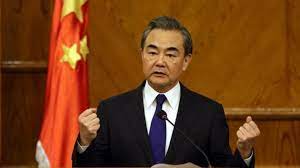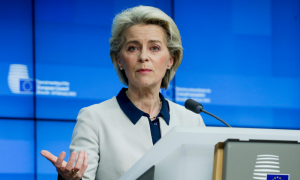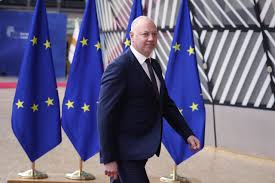Iron Brother China key supporter to drag Pakistan out of economic crises

Islamabad: Pakistan has been given a green signal by China and other friendly countries for investment and funding amid economic crises, the finance ministry said.
Minister of State Ayesha Ghous Pasha said that the brotherly countries, especially Iron Brother China, were supporting Pakistan at the crucial stage.
She mentioned that China had so far rolled over US $4.3 billion in debt, including US $2.3 billion in commercial loans and US $2 billion in deposits.
According to Pasha, there have been positive indications of an economic package worth US $8 billion from friendly countries, among these friendly countries China, Saudi Arabia, United Arab Emirates, and Qatar are leading.
China has made nearly US $26 billion in short and medium-term loans to Pakistan and Sri Lanka over the past five years as its overseas lending shifts from funding infrastructure toward providing emergency relief.
Data showing the shift in China’s US $900 billion Belt and Road Initiative (BRI) to loans aimed at easing foreign currency shortages since 2018 has been compiled by AidData, a research lab at William and Mary, a university in the US.
China has “pivoted in a significant way away from project lending and toward balance of payment lending, doing emergency rescue lending,” said Brad Parks, AidData’s executive director.
State-owned Chinese banks have lent US $21.9 billion in short-term loans to Pakistan’s central bank since July 2018, while Sri Lanka received US $3.8 billion of mostly medium-term lending since October 2018, according to figures compiled by AidData.
The Pakistani finance ministry indicated there had been significant progress has been made in the negotiations between Pakistan and Saudi Arabia, and there is a possibility of doubling the oil facility on deferred payment from Saudi Arabia.
The oil facility will increase from US $ 1.2 billion to US $ 2.4 billion and there is also a possibility of getting safe deposits from Saudi Arabia.
Minister of State Ayesha Ghous Pasha contended that the brotherly country has informed Pakistan in this regard, but the official announcement will be made by Riyadh soon.
Foreign exchange reserves of the State Bank of Pakistan (SBP) declined by US $190 million on July 29. Sharing a break-up of the foreign reserves position, the central bank said that the reserves held by the State Bank of Pakistan stand at US $8,385.4 million.
The UAE might show its interest in getting shares of state-owned enterprises (SOEs), especially in the oil and gas sector but it will take a few months for materialising such commercial transactions.
The possibility of gas and Re-Gasified Liquefied Natural Gas (RLNG) on deferred payment from Qatar is likely to be materialised soon as discussions are underway on this subject.
The selling out of RLNG power plants to one friendly country will also take some time but it could fetch US $2-$3 billion into the national kitty.
This week, the rupee strengthened to its highest level in nearly two weeks. The local unit closed at 228.80 per US dollar versus its previous close of 238.38. It rose by 9.6 rupees, a record highest recovery in absolute terms. The daily surge of 4.19 per cent was the best performance for the rupee since 1999.
The rupee slumped 14.4 percent in July, the biggest monthly fall since 1972. It has depreciated by 23 per cent this year, weighed down by shrinking foreign reserves and concerns over a delay in the International Monetary Fund (IMF) loan programme.
The IMF resident representative in Islamabad, Esther Perez Ruiz, said Pakistan had completed prior actions for the combined seventh and eighth reviews of the Extended Fund Facility, following the increase in petroleum development levy on July 31. This signaled a resumption of the bailout, boosting investor confidence in stabilising the economy.
However, the IMF linked the holding of its Executive Board meeting, which has been planned for late August, with the confirmation that Saudi Arabia and the United Arab Emirates would give an expected $4 billion loan to the country after the IMF releases its tranche.
Analysts see a sustained rebound in the rupee in the days ahead. “The rupee is likely to continue its appreciating trend due to expected inflows from the IMF and the external assistance from friendly countries.
The improvement in the current account deficit amid a decline in imports will help the rupee gain further in the coming days,” said Tahir Abbas, the head of research at the Arif Habib Limited. “We expect a smaller current account deficit of $300-400 million in July, compared with US $2.2 billion in June,” Tahir added.





